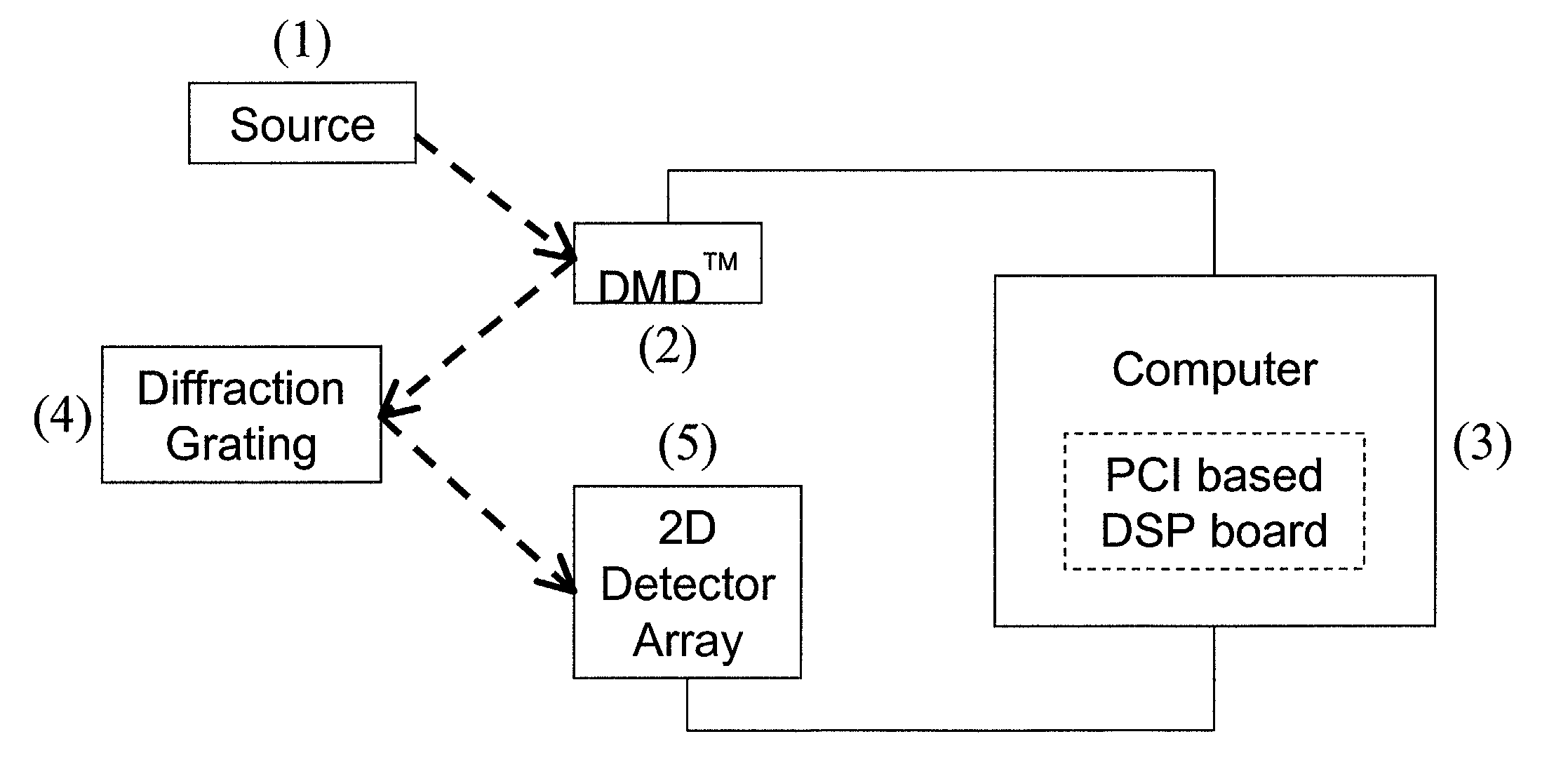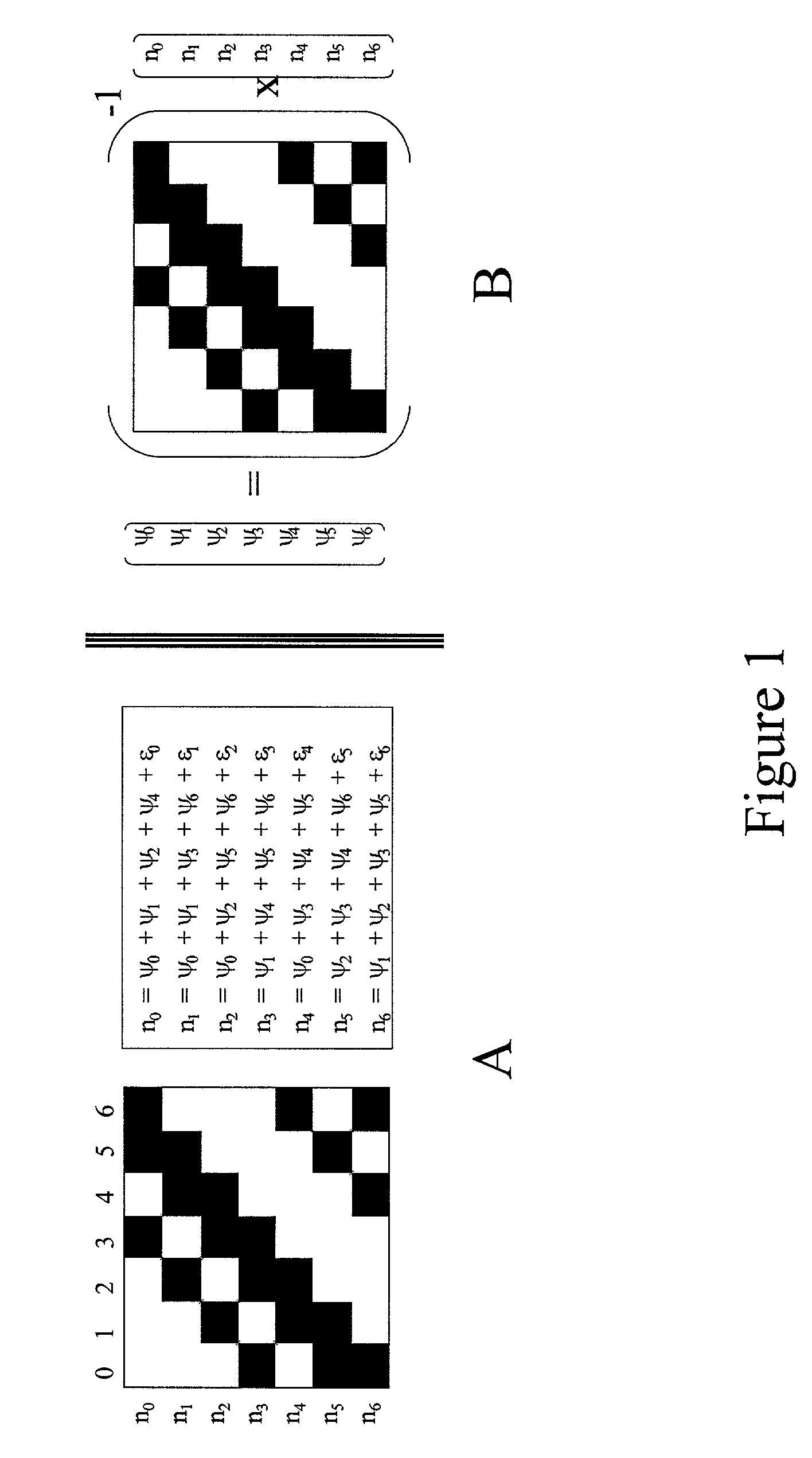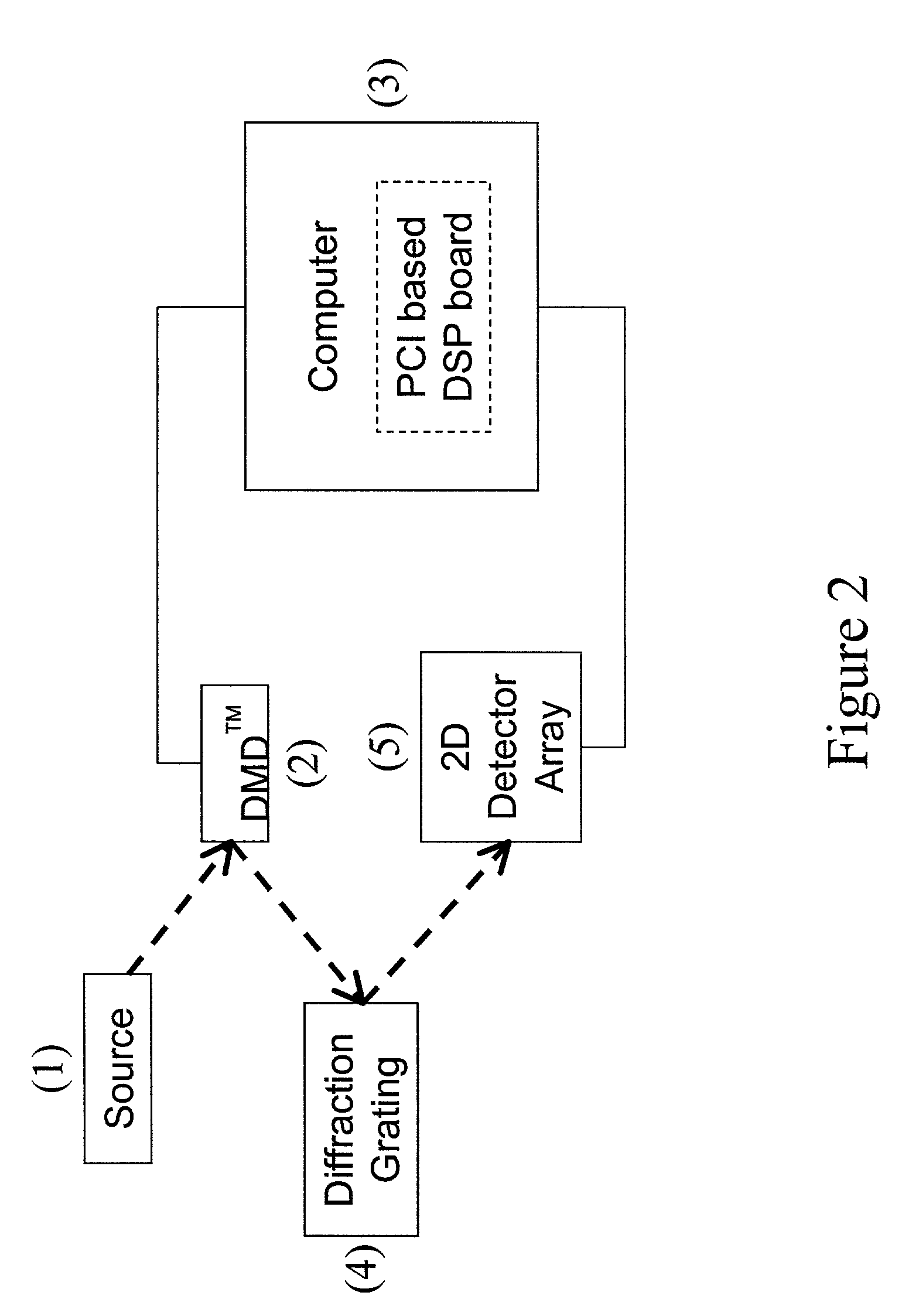Staring 2-D hadamard transform spectral imager
a technology of hadamard transform and spectral imager, which is applied in the direction of spectrometry/spectrophotometry/monochromator, instruments, and optical radiation measurement, etc., can solve the problems of spectral multiplexing techniques that have the potential of increasing snr and reducing the sample rate for a given measuremen
- Summary
- Abstract
- Description
- Claims
- Application Information
AI Technical Summary
Benefits of technology
Problems solved by technology
Method used
Image
Examples
Embodiment Construction
[0021]Depicted schematically in FIG. 2 are the primary components for an imaging device according to the present invention. An incoming 2D image source 1 is focused on a digital micromirror array such as DMD™2. After encoding in the spatial x-dimension on the DMD™2, the image is spectrally dispersed by a diffraction grating 4 and the spectrally dispersed, spatially Hadamard-encoded image is directed to a 2D detector array 5. The 2D detector array is read out for each element of the Hadamard encoding sequence, or once for each state of the DMD™2. This produces a sequence of data frames that carry mixed spatial and spectral information. The spatial and spectral information are separated in computer 3 by a Hadamard transform using the inversion technique with a moving window (as indicated by R(i:i+(h- 1)j), outlined in FIG. 5.
[0022]A second embodiment of the present invention is shown in FIG. 3. The dispersed 2D image source 1 is focused on to a DMD™3 by a split-Offner relay. A diffrac...
PUM
 Login to View More
Login to View More Abstract
Description
Claims
Application Information
 Login to View More
Login to View More - R&D
- Intellectual Property
- Life Sciences
- Materials
- Tech Scout
- Unparalleled Data Quality
- Higher Quality Content
- 60% Fewer Hallucinations
Browse by: Latest US Patents, China's latest patents, Technical Efficacy Thesaurus, Application Domain, Technology Topic, Popular Technical Reports.
© 2025 PatSnap. All rights reserved.Legal|Privacy policy|Modern Slavery Act Transparency Statement|Sitemap|About US| Contact US: help@patsnap.com



